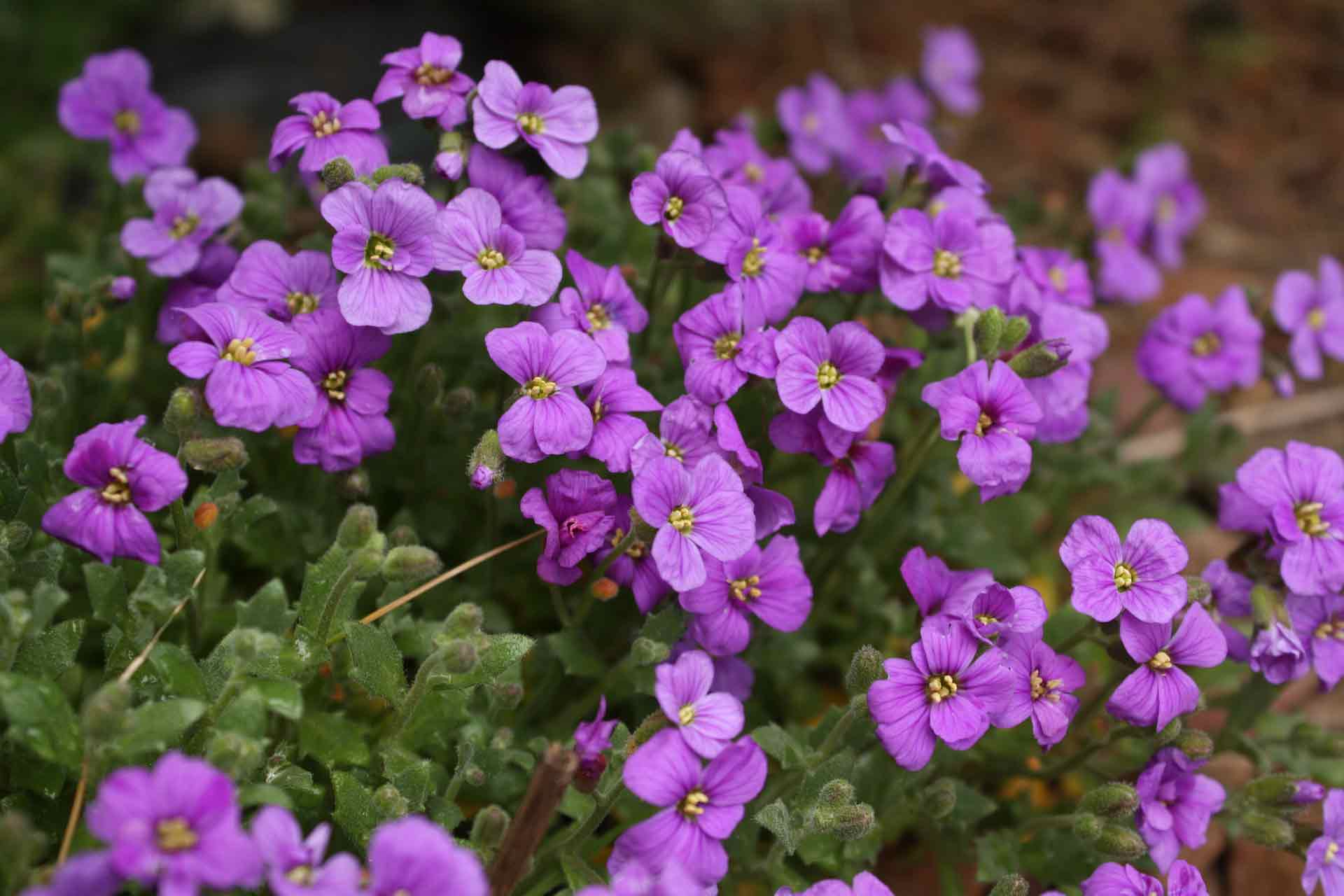
Aubrieta, Aubrieta: sowing, planting, growing
Summary
Aubrieta in a nutshell
- Aubrieta is an indispensable classic in rockeries and on walls!
- Pretty small perennial plant forming cushions of small blue, purple, pink, red or lilac flowers in spring
- Its evergreen leaves, plain green or variegated, adorn the garden all year round
- Floriferous and easy to grow in full sun in light, cool, well-drained soil
- Carefree plant requiring virtually no maintenance
A word from our expert
One cannot imagine a flowering rockery without ‘Aubrieta or aubrieta, this pretty little vigorous and floriferous perennial ground-cover plant literally forming a tapetum of colours.
Cultivated in our gardens since 1823, this alpine perennial has become indispensable in rockeries, all natural gardens and low-maintenance gardens.
From early spring, April to June, its evergreen foliage, silvery or variegated, provides a soft cushion for flowers in pink, violet, white or blue. After flowering, its leaves will continue to adorn the garden for the rest of the year.
Cultivated aubrietas are hybrids grouped under the name Aubrieta deltoidea or “Aubrieta deltoidea”, such as Aubrieta ‘Cascade Blue’. Less often encountered is Aubrieta gracilis and its variety Kitte®.
From dark-blue aubrieta to pink or red aubrieta, all are really easy to grow in full sun.
Aubrieta needs a well-drained, poor, cool, rocky soil, even calcareous.
Rockery plant par excellence, Aubrieta will also thrive in bed edging, along a path, to flower paving, crown a low wall or in troughs and planters.
Discover our aubrietas in pots or as seeds, these ground-covering plants that have the advantage of flowering quickly and abundantly without requiring any effort from the gardener!
And consider our perennial ground-covers and rockery perennials!
Botany
Botanical data sheet
- Latin name Aubrieta
- Family Brassicaceae
- Common names Aubrieta
- Flowering April to June
- Height 0.10 to 0.15 cm
- Sun exposure Sun, partial shade
- Soil type Stony, calcareous, fresh
- Hardiness -15°C
Aubrieta or Aubriete is a short-lived alpine perennial of the Brassicaceae family (like cabbages), found in rocks, scree and coniferous forests from Asia Minor to Turkey.
The genus comprises about a dozen species, but wild species have become rare and the plants encountered are mainly numerous hybrids, most derived from Aubrieta deltoidea, with varied colours and sometimes variegated foliage, such as Aubrieta x cultorum ‘Argenteovariegata’ or ‘Dr Mules Variegated’.
This plant spreads easily by rootstocks to quickly form slightly bushy mounds with a compact, mat-forming habit, not exceeding 15 cm in height for a minimum spread of 50 cm.
Although it colonises available ground quite rapidly, its lifespan is relatively short and rarely exceeds three to four years.
Its thin, creeping shoots, which rarely root, bear small semi-evergreen to evergreen leaves depending on climate severity, obovate to oblong, entire or with irregularly dentate margins, ending in a point.
Often pubescent, they form a dense ornamental carpet even in winter. Medium green, silver-green or bluish-green, they are, in some cultivars, sometimes nicely margined with silvery white or edged with gold.
From these densely leaved cushions, clouds of small single or double flowers emerge from April to June, sometimes earlier if temperatures are mild. They measure 1 to 2 cm in diameter and consist of four rounded petals forming a cross. They range from the most intense purples (‘Cascade Purple’), the most vivid blues (‘Cascade Blue’), the carmine-reds (‘Bressingham Red’), mauve-pinks, to the purest whites (‘Fiona’). Subtle shades are often highlighted by a pale yellow or white centre.
This long, melliferous flowering attracts bees and butterflies for more than two months.
Aubrieta is an undemanding perennial that is really easy to grow. Very hardy (from -15°C to -20°C), it can be cultivated across all our regions. Tolerant of soil, it thrives in sun in a light, well-drained soil, even calcareous and stony, provided it is not too dry, as it shows a preference for fresh soils in summer.
With its simple flowering, Aubrieta brings a rustic touch to natural and rock gardens. It is the plant of naturalistic rockeries and flowering walls par excellence! However, it also does well on a sunny bank, in paving joints, as well as in window boxes and hanging baskets.
You may also read
Succeeding in sowing perennial plantsMain species and varieties
There are more than a hundred cultivars of Aubrieta deltoidea in striking shades ranging from ruby red to lilac blue, through every intermediate shade up to white. The ‘Cascade’ varieties form a very floriferous groundcover.
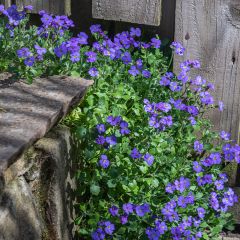
Aubrieta Cascade Blue
- Flowering time may, june
- Height at maturity 10 cm
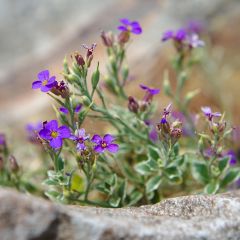
Aubrieta Dr Mules Variegated
- Flowering time april, may
- Height at maturity 10 cm
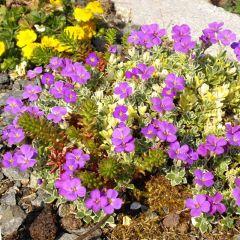
Aubrieta Argenteovariegata
- Flowering time may, june
- Height at maturity 15 cm
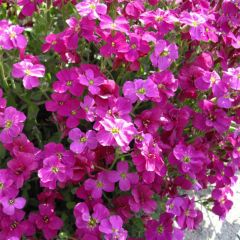
Aubrieta Bressingham Red
- Flowering time may, june
- Height at maturity 15 cm
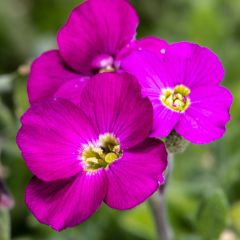
Aubrieta Red Cascade
- Flowering time may, june
- Height at maturity 15 cm
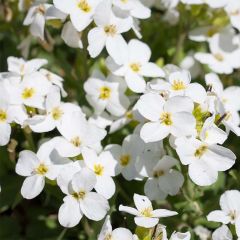
Aubrieta Fiona
- Flowering time may, june
- Height at maturity 5 cm

Aubrieta T&M Mixed Hybrids Seeds
- Flowering time april to june
- Height at maturity 12 cm
Discover other Aubrieta - Rock Cress
View All →Available in 2 sizes
Available in 1 sizes
Available in 1 sizes
Available in 0 sizes
Available in 1 sizes
Available in 1 sizes
Available in 1 sizes
Available in 1 sizes
Available in 1 sizes
Available in 1 sizes
Planting
Where to plant Aubrieta?
Hardy to -15°C to -20°C, Aubrieta can be grown throughout France.
Performs best in full sun, shade slowing its development.
Undemanding regarding soil, it prefers a light, fairly cool soil that does not dry out during summer. It does, however, dislike soils that are too compact or too wet in winter and will appreciate well-drained, rather calcareous and stony soils.
This perennial mat-forming plant is an excellent groundcover, capable of colonising surfaces quickly. Its tendency to smother weeds makes it an excellent alternative to lawn on cool sites. Give it plenty of space because, like many vigorous plants, it can smother more delicate neighbours.
Ideal in rockeries and on flowering walls to add splashes of colour, Aubrieta is also suitable for scalloping borders or edges of beds, carpeting slopes that are not too dry or running freely through paving.
It is well suited to being grown in a stone trough, in hanging baskets or in window boxes, from which its cascades of flowers will spill prettily.
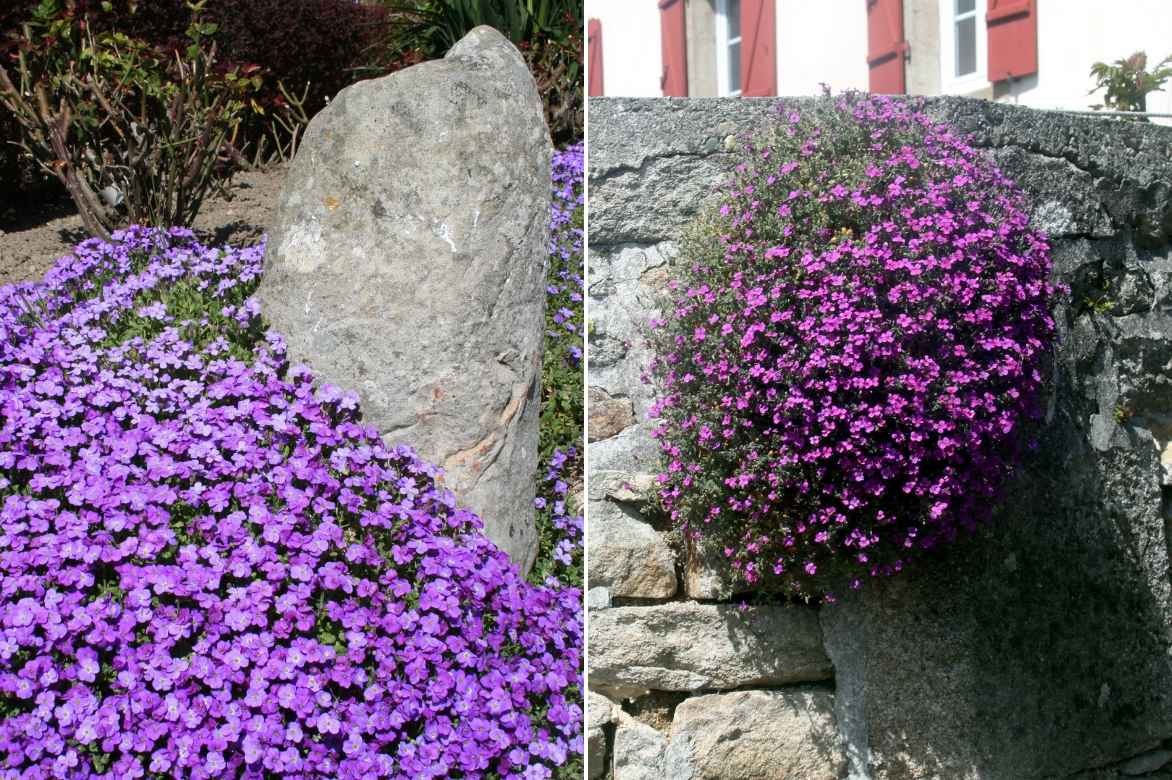
When to plant Aubrieta?
Plant Aubrieta preferably in spring, February to April, or in autumn, September to November, avoiding frosty periods.
How to plant Aubrieta?
In the ground
If your soil holds moisture, lighten it with a few handfuls of gravel, some compost and coarse sand and plant Aubrieta on top of a mound where water will not stagnate. To cover the soil effectively, plant at a density of 5 plants per m2, spaced about 30 cm apart.
- Dig a hole 2 to 3 times wider than the bucket
- Spread gravel at the bottom of the hole
- Plant without burying the collar too deeply
- Firm gently
- Water generously at planting
To grow Aubrieta in pots
A container 15 to 20 cm deep is sufficient. Plant it on its own rather than in association; Aubrieta’s vigorous nature could smother other plants.
- Spread a good draining layer (grit or clay pebbles) at the bottom of the container
- Plant in a mixture of garden soil, compost and potting compost for flowering plants
- Water regularly to keep the potting mix consistently moist
Find out more about growing Aubrieta in pots in Christine’s care sheet.
You may also read
Alternatives to grass: 10 ground covers to replace short grass meadowWhen and how to sow aubretia?
Sow Aubrieta from February to June in seed trays. Discover our unique collection of Aubrieta seeds, so easy to sow!
- Sow seeds thinly by scattering over surface of a seed tray filled with compost-based potting soil
- Cover seeds very lightly with potting soil
- Press down gently
- Keep sowings in light, out of direct sunlight
- Water generously with a fine spray and keep slightly moist until seeds germinate, which will take 14 to 21 days
- Maintain at 18 to 20°C during germination
- When seedlings have two or three true leaves, transplant into buckets
- Only plant out in garden from late May to early June, once soil is warmed
- Pot on young plants into planters, pots or directly into ground with added compost
- Space plants 30 cm apart
And follow our advice to sow your seeds successfully!
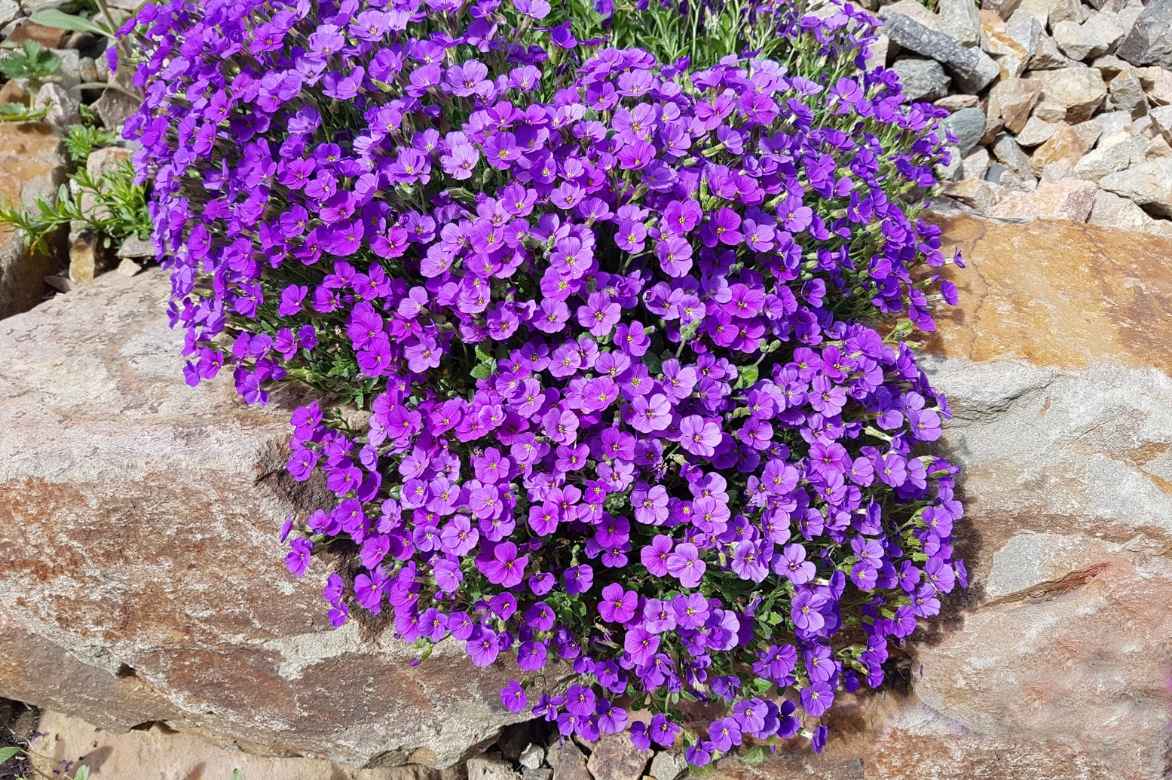
Care and Maintenance
Really undemanding, Aubrieta is ideal perennial for holiday gardens without a gardener and for no-maintenance gardens! It only needs attention during periods of extreme heat!
Supporting drought fairly well, it does however require regular waterings, especially during the first spring and in prolonged dry spells. If short of water, foliage may show punctate yellowing.
Mulch to keep root area cool in summer. Once well rooted, it will no longer need any water.
Each spring, for spectacular flowering, add a little compost if needed to keep clump vigorous.
In a pot, soil dries out faster than in open ground, water during growth as soon as substrate is dry but without overwatering. Repot in spring.
During summer, remove dry parts as they appear. To revitalise the clump, cover stems with a little light potting compost.
After flowering, pull out completely any clumps that are too old: sparse growth is a sign of ageing.
Pruning is not necessary, a cut-back after flowering will limit clump expansion and maintain compact growth and a good flowering. Using shears, cut back to ground level.
Diseases and potential pests
Vigorous, Aubrieta is easy to grow in sun, in drained soil. In these conditions, it proves fairly disease-resistant.
However, when weather is warm and rainy, it can be affected by white rust, a common fungal disease of crucifers. While it does not threaten survival of the plant, whitish down it leaves on leaves and on stems is rather unsightly: limit its appearance by avoiding excessive watering. If affected: cut off diseased leaves then treat by spraying horsetail manure or nettle manure on clumps. And do not replant aubrietas in same spot!
In case of aphids invasion: carry out sprays of soapy water.
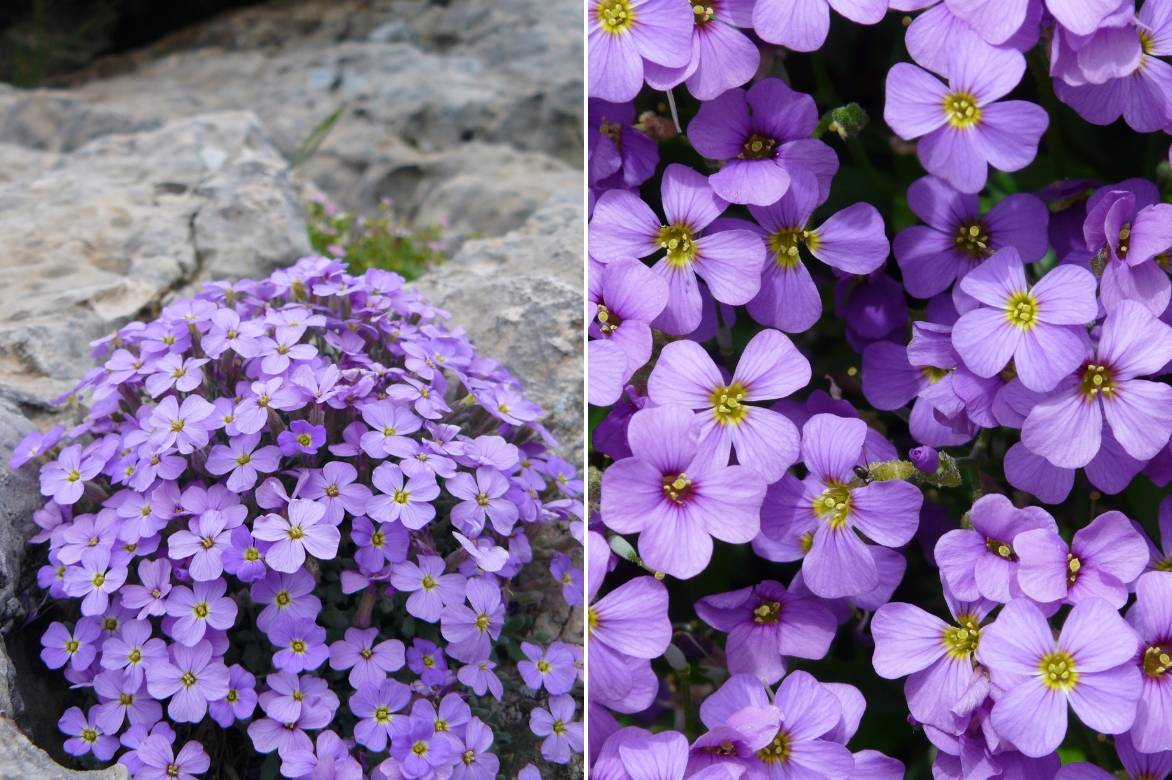
Multiplication
Short-lived, Aubrieta loses vigour after three or four years of cultivation: growth becomes less compact, sign that it is time to divide the clump to preserve it.
To multiply Aubrieta, propagation by cuttings and division remain the simplest and quickest methods.
By herbaceous cuttings
- In June, take 5 cm non-flowering cuttings
- Remove lower leaves
- Plant them in a light mix of turf and sand
- Water cuttings regularly
- Overwinter them frost-free
- Pot on into a larger pot in autumn
- Plant out the following spring, spacing about 30 cm apart
By division
- In autumn, lift the clump with a fork or spade
- Separate the rootball into several divisions
- Replant each new plant immediately in pots or in the garden
Associate
With its evergreen foliage and intensely coloured flowers, Aubrieta is indispensable in naturalistic gardens, low‑maintenance gardens, where it forms floriferous cushions with no upkeep. It brings volume and brightness, quickly creating lovely drifts of colour in all spring scenes. It is a must-have plant in pink gardens.
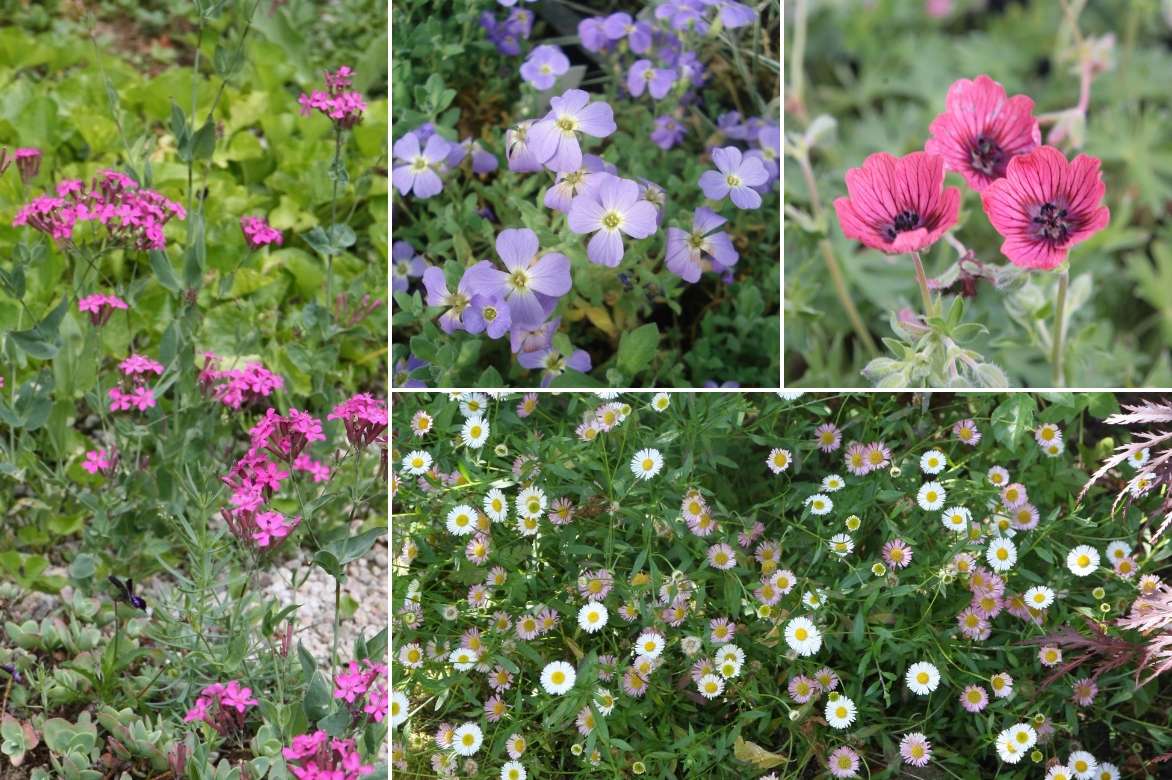
An example of a combination on a low wall or rockery: Dianthus carthusianorum, Aubrieta ‘Cascade Blue’, Geranium cinereum ‘Jolly Jewel salmon’ and Erigeron karvinskianus
It will flower low walls, banks and rockeries with other rockery perennials, alongside Alysses, Arabis, hardy geraniums, Cerastium, dwarf carnations, Erigeron karvinskianus and wall campanulas.
In a border, it slips easily between spring bulbs such as tulips, small daffodils, Ipheion, alliums, early agapanthus, botanical lilies or at the foot of a standard rose, small spring-flowering bushes such as daphnes or spiraeas, or taller spring-flowering perennials such as achilleas, wallflowers, dianthus, gypsophila, phlox, early euphorbias.
→ Some other ideas for combining Aubrieta in our advice sheet
Useful resources
- Follow our tips to care for perennials
- Aubrietas are essential in naturalistic gardens
- Discover our selection of Aubrietas: the 7 most beautiful varieties
- Looking to add flowers to a rockery? Here are the most beautiful rockery perennials!
- Aubrieta requires little maintenance; discover our tips for a low-maintenance garden
- Subscribe!
- Contents
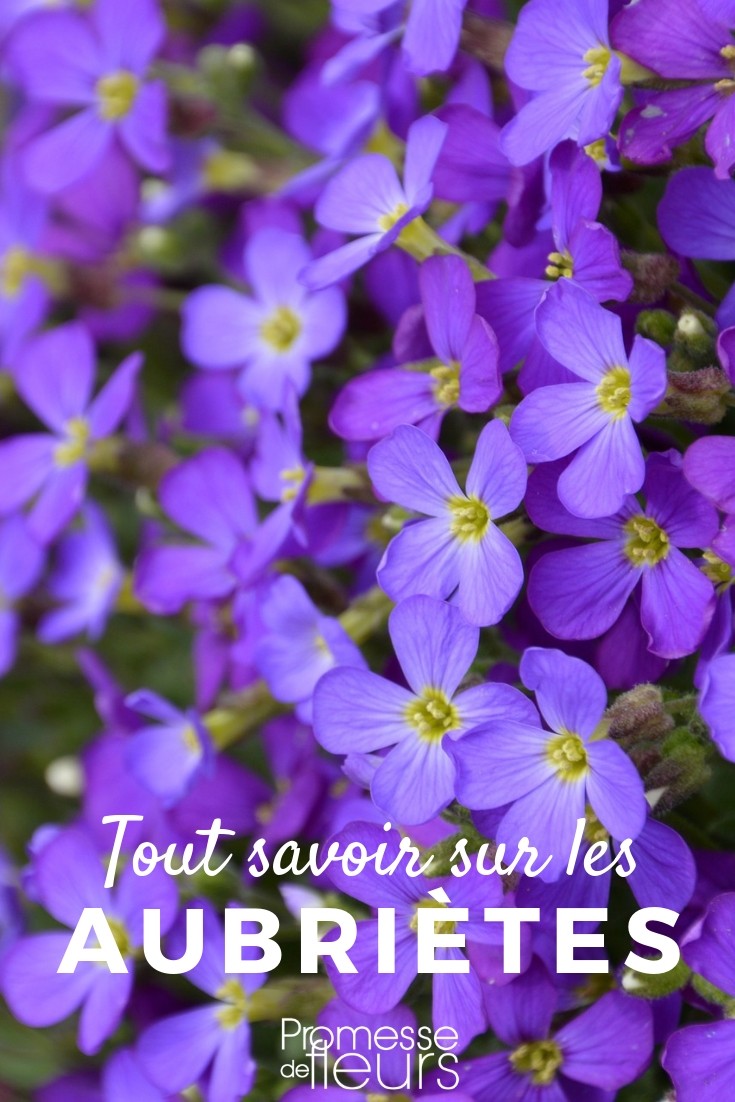































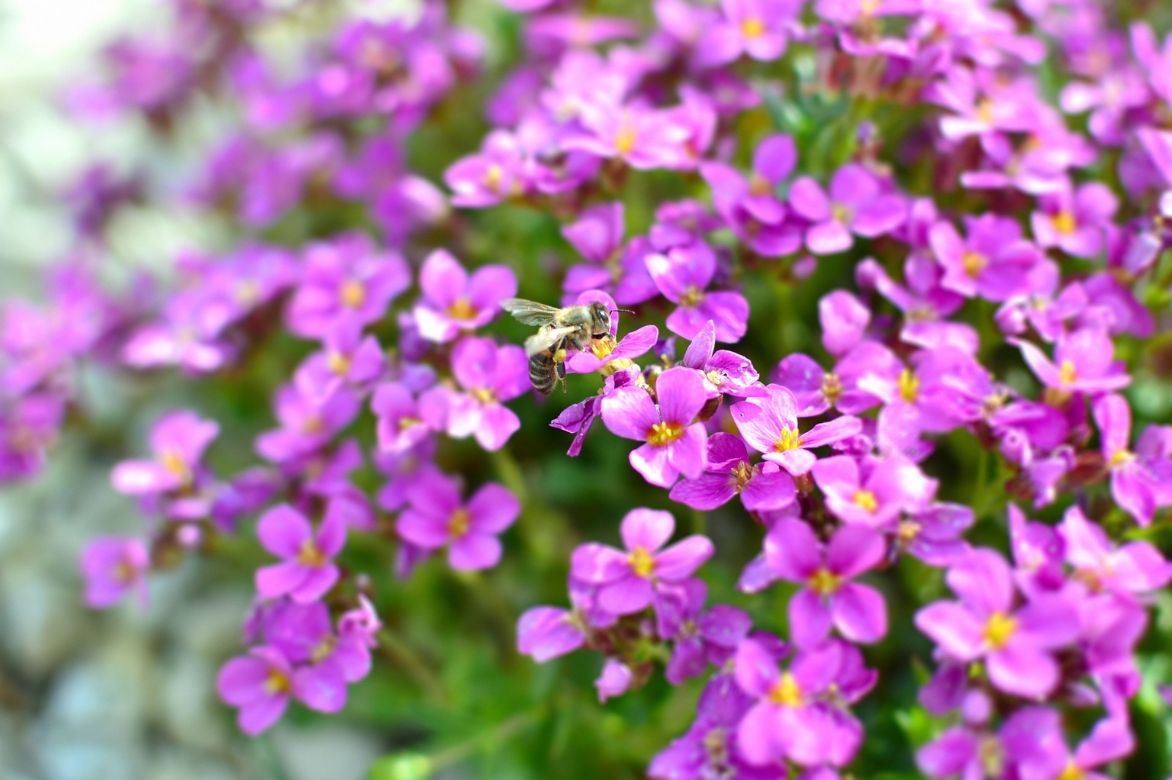


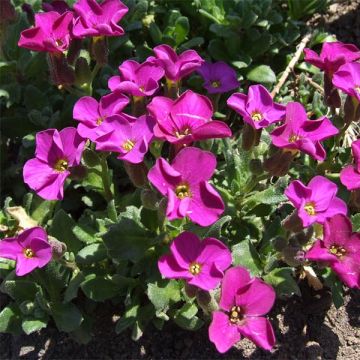
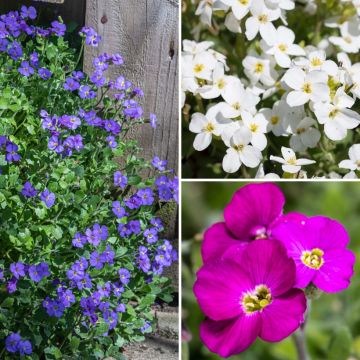
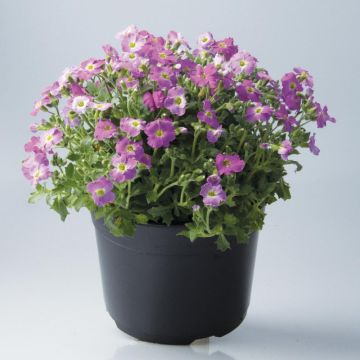
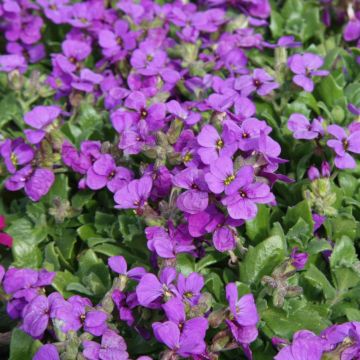
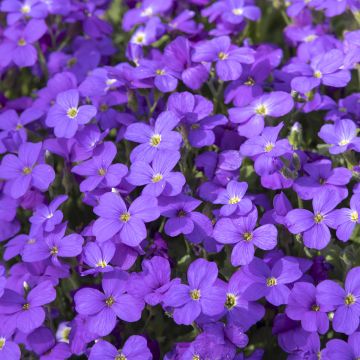

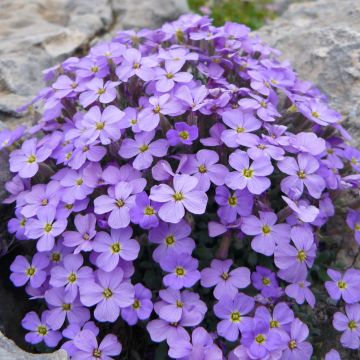
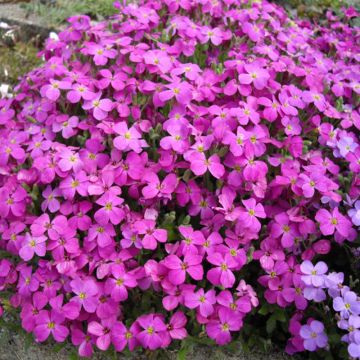
Feedbacks